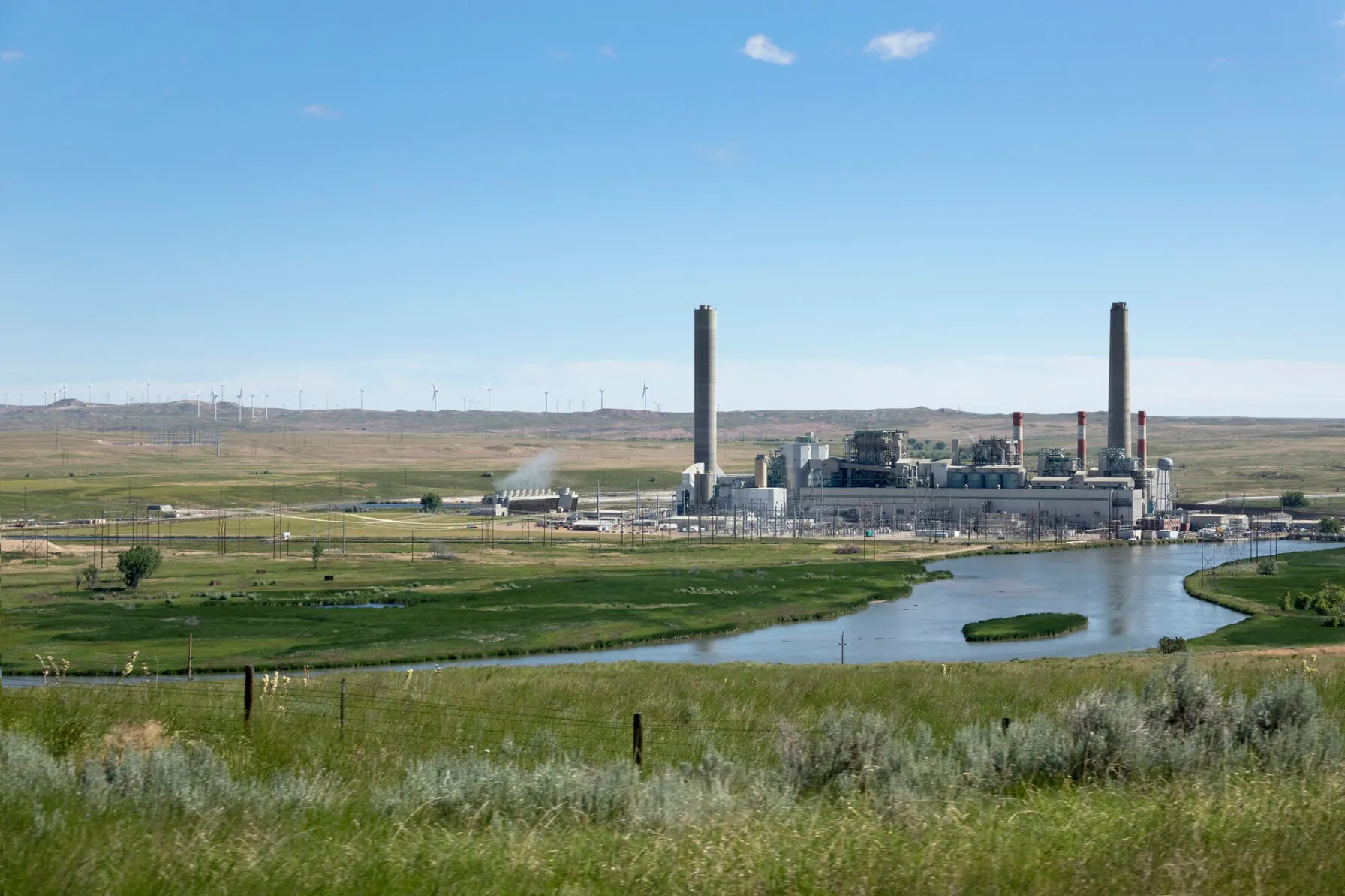Lab safety involves a multifaceted approach to address the wide range of potential dangers present within the facility. Consider starting with a hazard assessment to identify and evaluate hazards in labs. After the evaluation, we can work with you to develop risk management procedures.
Mitigate Compliance and Safety Risks
Managing your laboratory safety with proactive support.
More than 500,000 workers are employed in laboratories in the U.S., including research and development, teaching, diagnostic and analytical laboratories. Laboratory workers may be exposed to numerous potential hazards, including chemical, biological, radiation, laser, physical and ergonomic hazards. Laboratory work often involves changing and novel materials and processes that require an agile safety environment.
Laboratory accidents, such as exposures to chemicals and infectious materials, high voltage, explosions and fires, have led to injuries, illnesses, laboratory-acquired infections, deaths, damage to facilities and destruction of research. The U.S. Chemical Safety Board (CSB) reported 261 chemical incidents in public and private laboratories from 2001 to 2018 that led to 487 injuries and six deaths.
Many of these accidents could have been prevented with proper controls, work practices, procedures and training. In addition to safety and health risks, laboratories may generate multiple hazardous waste streams that must be properly managed. Laboratory work may involve materials and equipment that may be intentionally misused, requiring rigorous security controls, such as controlled substances, select agents and precursor chemicals.
Laboratories that work with chemicals, biological agents and/or radiation are governed by numerous federal, state and local environmental, health, safety and security regulations, codes and consensus standards. When laboratories are closed or renovated, they must be properly decommissioned, including removing and disposing of hazardous materials and equipment and cleaning or removing contaminated surfaces and infrastructure to protect contractors, future occupants and the environment.
All of the challenges laboratories face require specialized support from a partner you can trust. Our expert practitioners work with your facilities to identify potential concerns and applicable regulatory guidelines. We can address the full spectrum of your needs and serve you wherever you operate across the United States.

Gain Peace of Mind with TRC’s Laboratory Safety Expertise
Laboratory safety matters for various reasons, including meeting regulatory compliance standards. Laboratories deal with regulated chemicals, equipment and processes. The expansive array of guidelines and ongoing changes to these regulations mean you need support to ensure your laboratories meet the standards.
Our team identifies and mitigates risks, including noncompliance and employee safety concerns. Our laboratory safety solutions ensure continuous improvement.
Our areas of expertise include:
- The capability to create a safety policy adapted to the requirements of your particular lab and its operations
- Support in all situations, from design to implementation and ongoing maintenance
- Staff certifications from various leading safety organizations, including the Occupational Safety and Health Administration (OSHA) and the Board of Certified Safety Professionals
- Flexibility to work with an individual lab or at the corporate level
TRC’s Comprehensive Laboratory Safety Solutions
TRC provides seamlessly integrated safety services for laboratories. We work with academic institutions, pharmaceutical companies, manufacturing labs and other facilities to analyze current programs and support safety culture.
Our laboratory safety solutions include:
- Compliance audits: We provide a comprehensive lab evaluation to verify compliance with regulatory standards. This audit can assess processes, operating procedures, staff training, equipment and facility design.
- Laboratory hazard assessments: This service involves identifying potential hazards in a laboratory facility and ensuring proper protection and procedures to deal with risks.
- Safety programs: Our services involve developing programs for laboratories and vivariums, including chemical hygiene, biosafety, nonionizing and ionizing radiation, laboratory security, environmental compliance, controlled substances and laboratory ventilation.
- Training programs: Keep all lab workers up to date on standards and best practices through training programs from safety experts at TRC.
- Investigations: After an incident, our teams can conduct laboratory accident investigation and root cause analysis to implement corrective actions and prevent similar situations from reoccurring.
- Plan reviews: Our team can support the initial stages of lab development by reviewing new laboratory facility plans.
- Facility closings: Our services involve managing laboratory clean-out, decommissioning and demolition projects, including planning, budgeting, scheduling, technical support and oversight
According to the National Science Foundation, academic institutions in the U.S. conducted almost $80 billion in research and development in 2018 within over 220 million square feet of research space. Several high-profile accidents which resulted in severe injuries and deaths led to a national focus on safety culture in academic research laboratories. The U.S. CSB, the National Academy of Science, the American Chemical Society, OSHA and the Association of Public and Land-Grant Universities (APLU) published reports and recommendations for improving safety culture in academic research.
In addition to our laboratory safety services TRC supports organizations in assessing safety culture and implementing recommendations for improvement.
Achieve New
Possibilities
Partner With TRC’s Tested Practitioners
Frequently Asked Questions
Get answers to some of the most commonly asked questions about laboratory safety.
Many labs conduct safety audits at least annually. The frequency of safety audits may depend on several factors, including the facility operations and the particular hazards within a lab. A more high-risk facility may require more frequent audits to identify potential hazards early. TRC can partner with labs to develop a solution that meets all regulatory requirements.
Safety regulations constantly evolve, meaning laboratories must remain updated on the ones that apply to their particular facilities and operations. Besides learning about potential compliance challenges, labs can use audits to gain support from outside experts. These compliance practitioners provide an outside perspective to catch issues labs may have missed.
Laboratories may face various challenges regarding safety, including:
- Staying up to date on training lab personnel.
- Maintaining appropriate storage for hazardous materials and chemicals.
- Keeping adequate records related to safety compliance.
- Following suitable lab procedures regarding material handling.
- Meeting facility design requirements in areas like ventilation hoods.
Ensure a Safe, Compliant and Efficient Laboratory With TRC
We support the development of safer labs through solutions including audits, plan reviews and safety culture development. Whether you’re building a new lab, examining your current operations or decommissioning a facility, turn to our team for peace of mind.

Sharing Our Perspectives
Our practitioners share their insights and perspectives on the trends and challenges shaping the market.

OSHA Enforces New National Emphasis Program to Address Concerns with Warehouses and Distribution Centers
August 23, 2023
Why is OSHA concerned with Warehouses and Distribution Center Operations? The warehousing and distribution centers industries are growing rapidly, with employment increasing from 668,900 workers in 2011 to 1,713,900 in 2021. Within these same industries, there have been high rates of illness and injury. Specifically, within the warehousing and storage industry, top illnesses and injuries in 2020 included:

How to Use an Integrated Approach To Manage EHS and ESG Risks
April 20, 2022
According to the National Safety Council (NSC), an employee is injured on the job every seven seconds. Workplace accidents are all too common and can cause major problems for employees and employers. We’re going to look at some of the most common workplace accidents and discuss how to avoid and prevent them so you and your employees can enjoy the benefits of a safe work environment.

Creating and Protecting Business Value Through Integrated EHS&S Systems
August 4, 2025
This White Paper discusses key components of a strategy to achieve EHS&S performance excellence while protecting an organization’s workforce, communities and the environment.

Building a Flexible ESG Due Diligence Strategy in a Challenging Market
July 21, 2025
Assessing a target company’s ESG profile during a transaction is more important than ever. To meet the needs of clients operating under tight timelines or limited budgets, our team developed InitiatESG, a streamlined ESG pre-screening solution designed to flag key ESG risks quickly and cost-effectively—without the commitment of a full diligence engagement.

EPA Unveils Largest Deregulatory Initiative in U.S. History
April 1, 2025
Environmental Protection Agency (EPA) Administrator Lee Zeldin has announced the Agency’s plan to undertake 31 deregulatory actions with the stated goal of driving down the cost of living for Americans and revitalizing the American energy and auto industry.

Fostering an Enjoyable and Resilient Project Management Career
March 10, 2025
In his final contribution to EM Magazine, TRC’s David Elam shares his thoughts on the health, well-being and success of project managers everywhere. These takeaways go beyond skills and habits in the workplace, and explore how project managers can align their lives outside of work with their professional goals.

Changes to EPA’s Risk Management Program (RMP) Regulations Are Coming
April 14, 2023
Changes to the Risk Management Program (RMP) regulations were signed into a final rule on February 27, 2024, by EPA Administrator Michael S. Regan.

Routinely Evaluating the Health & Effectiveness of Integrated Systems to Manage EHS/ESG Risks – Part I
March 1, 2023
Once established, an EHS/ESG management system must be routinely evaluated to ensure it remains effective to identify and control risks, as well as accommodate and adjust for changes that occur to/within the organization.

EPA Publishes Effluent Guidelines Program Plan 15
February 14, 2023
The EPA announced updated effluent limitations guidelines under Plan 15, focusing on the evaluation and rulemaking process for per- and polyfluoroalkyl substances (PFAS) discharges.

Proactive Enforcement is Key in the EPA FY2022-2026 Strategy
October 19, 2022
A core element of the EPA FY2022-2026 Strategic Plan focuses on environmental compliance.

Optimizing EHS/ESG Information Management and Reporting Systems by Leveraging Innovative Digital Technology Solutions
August 10, 2022
A single, integrated enterprise wide EHS/ESG IMS can significantly improve performance and communicate progress towards organizational requirements and goals.

Five New PFAS Added to EPA Regional Screening Levels (RSLs)
June 24, 2022
EPA announced the addition of five new PFAS to the list of Regional Screening Levels (RSLs)

Integrating Sustainability, Digital Connectivity and Design Optimization in Wastewater Treatment Systems
June 20, 2022
Some organizations rarely think about water and wastewater treatment, until there is a problem. American industry depends on the ability to treat wastewater discharges while complying with regulatory standards and addressing emerging contaminants. If wastewater treatment fails, our environment is negatively impacted, and companies are exposed to shutdowns, delays and fines.

Support an Integrated EHS/ESG Management System
June 10, 2022
What Is an Indoor Air Quality Assessment? An indoor air quality assessment involves identifying and addressing air quality issues within a facility to ensure a healthy and safe environment for occupants. The assessment process typically includes an initial inspection, laboratory testing for contaminants, and recommendations for improvements. LEED-certified buildings prioritize indoor air quality, adopting measures to maintain good IAQ throughout construction and occupancy. Contact Us

Worst Case Discharges of Hazardous Substances – Proposed Rule
May 25, 2022
In compliance with the Clean Water Act (CWA), the U.S. Environmental Protection Agency (EPA) recently proposed a new rule for onshore non-transportation-related facilities requiring specified facilities to plan for worst case discharges (WCDs) of CWA hazardous substances that could cause substantial harm to the environment.

PFAS Discharges and NPDES Permits
May 25, 2022
On April 28, 2022, the U.S. Environmental Protection Agency’s (EPA) Office of Water released a memo addressing the use of National Pollutant Discharge Elimination System (NPDES) permits to restrict per- and poly-fluoroalkyl substances (PFAS) discharges to water bodies.

How to Use an Integrated Approach To Manage EHS and ESG Risks
April 20, 2022
What Is an Indoor Air Quality Assessment? An indoor air quality assessment involves identifying and addressing air quality issues within a facility to ensure a healthy and safe environment for occupants. The assessment process typically includes an initial inspection, laboratory testing for contaminants, and recommendations for improvements. LEED-certified buildings prioritize indoor air quality, adopting measures to maintain good IAQ throughout construction and occupancy. Contact Us

SEC Releases New Proposed Rules Requiring Public Companies to Disclose Climate Risks
April 12, 2022
On March 21, 2022, the U.S. Securities and Exchange Commission (SEC) issued its proposed rules for The Enhancement and Standardization of Climate-Related Disclosures for Investors which would require public companies in the U.S. to disclose information in their annual financial reports.

PFOA & PFOS As CERCLA Hazardous Substances: What Does This Mean and How Can You Be Prepared?
February 17, 2022
A plan to designate two per- and polyfluoroalkyl substances (PFAS) as “hazardous substances” under CERCLA was recently submitted by the EPA.

EPA Adds First New Hazardous Air Pollutant Since 1990
January 14, 2022
EPA finalized a rule to add 1-bromopropane to the federal list of hazardous air pollutants (HAPs) on December 22, 2022.

EPA Finalizes TRI Reporting Requirements for Natural Gas Processing Facilities
December 7, 2021
EPA finalized rule to add natural gas extraction and/or processing plants to Toxics Release Inventory reporting requirements

OSHA’s National Emphasis Program on Heat-Related Illness and Injuries
November 3, 2021
On September 20, 2021 in an OSHA National News Release, OSHA published a memorandum establishing an enforcement initiative that is designed to prevent and protect employees from heat-related illnesses and death. This initiative, which develops a National Emphasis Program (NEP) on heat inspections, is an expansion of an already existing Regional Emphasis Program (REP) in OSHA’s Region VI, which covers Arkansas, Louisiana, New Mexico, Oklahoma and Texas.

NJDEP Implements New Jersey Environmental Justice Law Through Administrative Order
October 5, 2021
On September 22, 2021, the New Jersey Department of Environmental Protection (NJDEP) Commissioner announced the issuance of Administrative Order (AO) No. 2021-25 to implement New Jersey’s Environmental Justice (EJ) Law. This order is effective immediately, and applicants seeking to site new major source facilities, renew major source permits or expand existing facilities with major source permits (e.g., Title V air permits) in overburdened communities are affected. There are more than 4.5 million people that live within 331 municipalities that are overburdened communities in the state of New Jersey.

OSHA’s Call for Comments on Mechanical Power Press Standard Changes
September 30, 2021
OSHA has recently published a call for comment regarding mechanical power presses. The reason behind OSHA’s request is that the American National Standards Institute (ANSI) consensus standard for mechanical power presses has been updated numerous times since the implementation of OSHA’s standard.

OSHA Returns to In-Person Inspections As COVID-19 Restrictions Lift
August 4, 2021
The Occupational Safety and Health Administration (OSHA) is authorized by the Occupational Safety and Health Act of 1970 (OSH Act) to assure employers provide safe and healthful work conditions free of recognized hazards and by setting and enforcing standards and providing training, outreach, education and technical assistance. OSHA has recently announced the return to in-person inspections as COVID-19 restrictions begin to lift.

EPA Proposed PFAS Reporting Requirement
July 29, 2021
New proposed rule would require all manufacturers and importers to report any amount of PFAS onsite

Managing EHS & ESG Risks Through Integrated Systems Today and Beyond
July 22, 2021
It has been more than 50 years since the development and establishment of the federal Environmental Protection Agency (EPA) and the federal Occupational Safety & Health Administration (OSHA) which were formed to protect our environment and workplaces across the United States. Significant laws, policies and regulations followed to establish the “regulatory programs” that all applicable businesses and entities must address and meet to ensure these compliance-driven legislative programs would create a foundation to protect our society.

OSHA COVID-19 Guidance, Regulation and Enforcement to Protect Workers
April 13, 2021
The Occupational Safety and Health Administration (OSHA) has signaled their intent to provide more guidance, regulation and enforcement with respect to protecting workers from contracting COVID-19 at their place of work. Among the key developments:

2020: A Year to Remember or a Year to Forget?
December 20, 2020
Published in EM Magazine, December 2020, this article by TRC’s David Elam speaks to the importance of pausing to reassess the work challenges we’ve faced due to COVID-19 this year and our accomplishments despite the challenges, and how to prepare for the coming year, after one of the most difficult years in modern history.

TRC Companies Inc. Acquires 1Source Safety and Health
November 11, 2020
TRC Companies (“TRC”), a leading technology-driven provider of end-to-end engineering, consulting and construction management solutions, has acquired 1Source Safety and Health, a firm that provides management consulting services in areas such as indoor air quality, asbestos management, industrial hygiene and safety management systems.

TRC Awarded a Yahara WINS Grant
August 28, 2020
TRC was recently awarded a Yahara WINS grant to develop a pilot scale simple aeration method for removing phosphorous from the discharge of manure digesters. The grant application was developed and submitted by: Bob Stanforth, Alyssa Sellwood, Mike Ursin, Ted O’Connell, Ken Quinn, and John Rice, who are members of multiple TRC CORE teams.

Ecological Risk of PFAS from AFFF-Impacted Sites
June 30, 2020
The facts on evaluating exposure to wildlife

How to Implement ISO 45001 – 2018, Occupational Health and Safety Management System
April 1, 2020
In March 2018, ISO finalized its occupational health and safety (OH&S) management system standard ISO 45001-2018. For those companies certified under the former occupational health and safety management system standard OHSAS 18001, the clock is ticking if you are considering migrating to the new ISO standard and maintaining your current certification. Companies that have implemented OHSAS 18001 and are interested in maintaining certification have until March 2021 or about a year to implement the new standard or lose certification.

TRC Brings Environmental Services to Manchester with Second UK Office
March 5, 2020
In continuing to expand our presence in a key British market, TRC is opening our second UK office in Manchester, England

2020 New Year’s Safety Resolution? How About Construction Safety?
February 20, 2020
Safety isn’t all about tracking statistics. To make it work, you need to interact positively with people. TRC construction health and safety specialist Cody Gladstone explains how to gain credibility on the jobsite and get everyone home safe at the end of the day.

Fostering an Enjoyable and Resilient Project Management Career
March 10, 2025
In his final contribution to EM Magazine, TRC’s David Elam shares his thoughts on the health, well-being and success of project managers everywhere. These takeaways go beyond skills and habits in the workplace, and explore how project managers can align their lives outside of work with their professional goals.

OSHA Addresses Arc Flash Hazards and Electrical Safety in the Workplace
March 5, 2025
OSHA releases guidance document on “Addressing Arc Flash Hazards in a Safety and Health Program” and the alignment with NFPA 70E standard for Electrical Safety in the Workplace. The Occupational Safety and Health Administration (OSHA) recently published a guidance document that aligns with the National Fire Protection Association (NFPA) 70E standard for Electrical Safety in the Workplace. The guidance document outlines how to use a management system to protect workers from arc flash hazards by focusing on worker participation, hazard identification, evaluation and control methods.

Changes to EPA’s Risk Management Program (RMP) Regulations Are Coming
April 14, 2023
Changes to the Risk Management Program (RMP) regulations were signed into a final rule on February 27, 2024, by EPA Administrator Michael S. Regan.

EPA Finds Trichloroethylene Presents Unreasonable Risk in Final Risk Evaluation
April 6, 2023
On Jan 9, 2023, the United States Environmental Protection Agency (EPA) revised the Toxic Substance Control Act (TSCA) to reflect a new risk determination for trichloroethylene (TCE).

Routinely Evaluating the Health & Effectiveness of Integrated Systems to Manage EHS/ESG Risks – Part I
March 1, 2023
Once established, an EHS/ESG management system must be routinely evaluated to ensure it remains effective to identify and control risks, as well as accommodate and adjust for changes that occur to/within the organization.

QA and Chemistry Services
February 23, 2023
TRC offers many QA and Chemistry services including data usability assessments, limited and full data validation reports, quality assurance project plan preparation, selection of appropriate analytical methodologies and laboratory audits.

PFAS Fate and Transport: Conceptual Site Models
February 23, 2023
The conceptual site model describes site-specific sources, release and transport mechanisms, exposure media, exposure points, exposure pathways and routes and potential human and/or ecological receptor populations.

EPA Publishes Effluent Guidelines Program Plan 15
February 14, 2023
The EPA announced updated effluent limitations guidelines under Plan 15, focusing on the evaluation and rulemaking process for per- and polyfluoroalkyl substances (PFAS) discharges.

PFAS: Remedial Approaches
February 8, 2023
Remediating Per- and poly-fluoroalkyl substances (PFAS) from the soil and water requires effective techniques and innovative technologies. TRC’s experts are well versed in several remediation strategies intended to remove PFAS and prevent re-exposure.

Proactive Enforcement is Key in the EPA FY2022-2026 Strategy
October 19, 2022
A core element of the EPA FY2022-2026 Strategic Plan focuses on environmental compliance.

Optimizing EHS/ESG Information Management and Reporting Systems by Leveraging Innovative Digital Technology Solutions
August 10, 2022
A single, integrated enterprise wide EHS/ESG IMS can significantly improve performance and communicate progress towards organizational requirements and goals.

Integrating Sustainability, Digital Connectivity and Design Optimization in Wastewater Treatment Systems
June 20, 2022
Some organizations rarely think about water and wastewater treatment, until there is a problem. American industry depends on the ability to treat wastewater discharges while complying with regulatory standards and addressing emerging contaminants. If wastewater treatment fails, our environment is negatively impacted, and companies are exposed to shutdowns, delays and fines.

Support an Integrated EHS/ESG Management System
June 10, 2022
WINDSOR, Conn. – TRC Companies, a digitally powered and environmentally focused global professional services firm, has been named #21 by Environmental Analyst in the 2022 Top 100 Environmental & Sustainability Consultancy Firms. “As one of the top global providers of Climate Solutions, TRC is proud to be recognized as a leader in environmental and sustainability, areas that are critically important to our clients and communities we serve,” said Christopher P. Vincze, Chairman & CEO of TRC. “Sustainability is a fundamental principle that drives our business, and we embrace the trust our clients place in us as we tackle some of the pressing energy, environmental and infrastructure challenges the world faces… making the Earth a better place to live — community by community and project by project.”

TRC Companies Pledges to Achieve Net Zero GHG Emissions by 2040
April 26, 2022
TRC Companies, a digitally powered and environmentally focused global professional services firm, announced its commitment to achieve Net Zero greenhouse gas (GHG) emissions across its full value chain by 2040, aligning with the most ambitious aim of the Paris Agreement to limit global temperature rises to 1.5 °C.

How to Use an Integrated Approach To Manage EHS and ESG Risks
April 20, 2022
WINDSOR, Conn. – TRC Companies, a digitally powered and environmentally focused global professional services firm, has been named #21 by Environmental Analyst in the 2022 Top 100 Environmental & Sustainability Consultancy Firms. “As one of the top global providers of Climate Solutions, TRC is proud to be recognized as a leader in environmental and sustainability, areas that are critically important to our clients and communities we serve,” said Christopher P. Vincze, Chairman & CEO of TRC. “Sustainability is a fundamental principle that drives our business, and we embrace the trust our clients place in us as we tackle some of the pressing energy, environmental and infrastructure challenges the world faces… making the Earth a better place to live — community by community and project by project.”

SEC Releases New Proposed Rules Requiring Public Companies to Disclose Climate Risks
April 12, 2022
On March 21, 2022, the U.S. Securities and Exchange Commission (SEC) issued its proposed rules for The Enhancement and Standardization of Climate-Related Disclosures for Investors which would require public companies in the U.S. to disclose information in their annual financial reports.

EPA Issues Information Collection Request for Plywood and Composite Wood Products Source Operators
March 17, 2022
EPA issued an Information Collection Request (ICR) to develop new emission standards for inclusion in the Plywood and Composite Wood Products (PCWP) National Emissions Standards for Hazardous Air Pollutants (NESHAP).

EPA Lifts Stay of Standards for New Lean Premix and Diffusion Flame Gas-fired Combustion Turbines
March 14, 2022
The EPA Administration signed a notice to finalize amendments to the National Emission Standards for Hazardous Air Pollutants (NESHAP) for Stationary Combustion Turbines

PFOA & PFOS As CERCLA Hazardous Substances: What Does This Mean and How Can You Be Prepared?
February 17, 2022
A plan to designate two per- and polyfluoroalkyl substances (PFAS) as “hazardous substances” under CERCLA was recently submitted by the EPA.

OSHA’s National Emphasis Program on Heat-Related Illness and Injuries
November 3, 2021
On September 20, 2021 in an OSHA National News Release, OSHA published a memorandum establishing an enforcement initiative that is designed to prevent and protect employees from heat-related illnesses and death. This initiative, which develops a National Emphasis Program (NEP) on heat inspections, is an expansion of an already existing Regional Emphasis Program (REP) in OSHA’s Region VI, which covers Arkansas, Louisiana, New Mexico, Oklahoma and Texas.

NJDEP Implements New Jersey Environmental Justice Law Through Administrative Order
October 5, 2021
On September 22, 2021, the New Jersey Department of Environmental Protection (NJDEP) Commissioner announced the issuance of Administrative Order (AO) No. 2021-25 to implement New Jersey’s Environmental Justice (EJ) Law. This order is effective immediately, and applicants seeking to site new major source facilities, renew major source permits or expand existing facilities with major source permits (e.g., Title V air permits) in overburdened communities are affected. There are more than 4.5 million people that live within 331 municipalities that are overburdened communities in the state of New Jersey.

OSHA’s Call for Comments on Mechanical Power Press Standard Changes
September 30, 2021
OSHA has recently published a call for comment regarding mechanical power presses. The reason behind OSHA’s request is that the American National Standards Institute (ANSI) consensus standard for mechanical power presses has been updated numerous times since the implementation of OSHA’s standard.

OSHA Returns to In-Person Inspections As COVID-19 Restrictions Lift
August 4, 2021
The Occupational Safety and Health Administration (OSHA) is authorized by the Occupational Safety and Health Act of 1970 (OSH Act) to assure employers provide safe and healthful work conditions free of recognized hazards and by setting and enforcing standards and providing training, outreach, education and technical assistance. OSHA has recently announced the return to in-person inspections as COVID-19 restrictions begin to lift.

Managing EHS & ESG Risks Through Integrated Systems Today and Beyond
July 22, 2021
It has been more than 50 years since the development and establishment of the federal Environmental Protection Agency (EPA) and the federal Occupational Safety & Health Administration (OSHA) which were formed to protect our environment and workplaces across the United States. Significant laws, policies and regulations followed to establish the “regulatory programs” that all applicable businesses and entities must address and meet to ensure these compliance-driven legislative programs would create a foundation to protect our society.






































